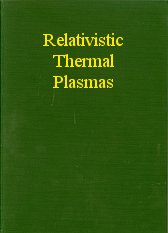
Susan Stepney.
Relativistic Thermal Plasmas.
Institute of Astronomy, University of Cambridge. 1983
(read but not reviewed)
This volume brings together work from a multidisciplinary group of scientists, who are studying a variety of techniques and applications for modelling and simulating complex systems.
Building on the success of previous CoSMoS workshops, these proceedings explore a range of modelling and simulation techniques together with a selection of complex systems case-studies.
The book is useful for graduate students, researchers in the field, and the general scientific reader who is interested in inherently interdisciplinary research at the intersections of computer science, biology, chemistry, physics, engineering and mathematics.
In Part I the authors provide a managerial overview: the rationale for and benefits of using the CoSMoS approach, and a small worked example to demonstrate it in action. Part II is a catalogue of the core patterns. Part III lists more specific “helper” patterns, showing possible routes to a simulation. Finally Part IV documents CellBranch, a substantial case study developed using the CoSMoS approach.
The book is suitable for academics, practitioners, and professionals, and postgraduates in complex systems, narrative theory, literary and film studies, new media and game studies, and science communication.